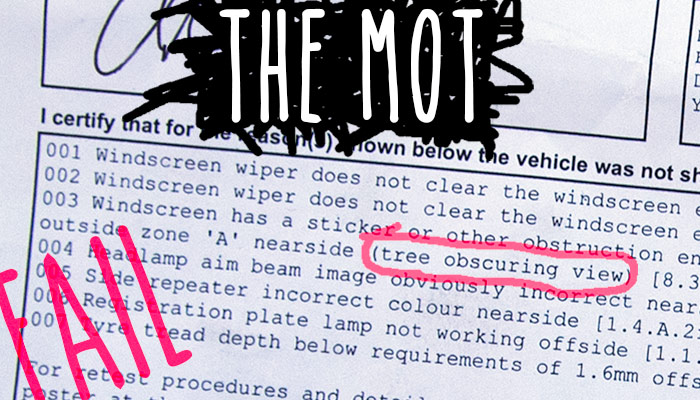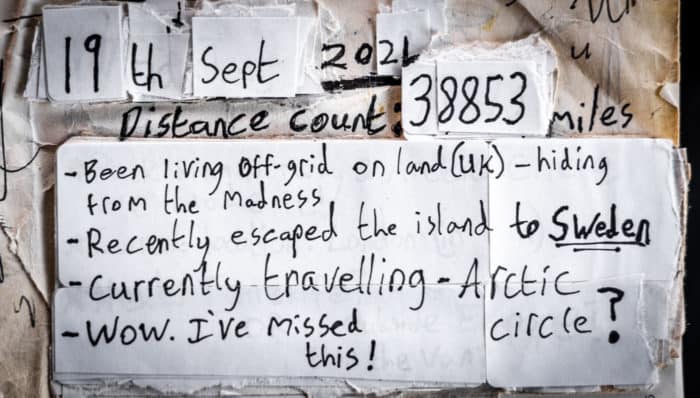Here’s an overview of this very cheap GPS tracker (seen on Ebay and Amazon)…
This post goes over how I fitted this cheap GPS tracker, I bought on Amazon, to my campervan.
For less than £30 I was surprised by not only the build quality of this GPS unit but also pretty stunned by the incredible amount of features which are not even seen on trackers costing 5 times the price…
Unbranded GPS tracker – what stuff does it do?
As with most of these cheap Chinese/eBay products, this tracker is unbranded, but it does have a model number: TK103A. There’s no point my listing everything it can do. Have a look at the Amazon reviews to get an idea of all the different ways people are using these – the reviews do a better job at selling this GPS tracker than the actual product description which does happen from time to time on Amazon. Features:
- has the SiRF III chip-set as used in top branded GPS units (Garmin, TomTom)
- highly sensitive. Can decode GPS signals as low as -160dBm
- programmable via remote text messages and also local USB connection
- remotely disable/enable engine via text message
- location reporting at user specified intervals
- inputs for door sensors, fuel level, ignition switch and even microphone
- outputs for alarm sounder (can connect to vehicle horn or dedicated siren)
- Lasts 4 hours without external power using internal rechargeable Li-ion battery
Buy this GPS tracker on Amazon UK
GPS Car Tracker with GPRS and Vehicle Theft Protection System (Model:TK103A)![]()
You will help me if you click on this link and then buy something on Amazon. I get 5% of the total checkout value – it’s a few pence but it will help me run this site and maybe buy an avocado once in a while. Thank you!
![]()
*note: if you want to know more about the product link (above) then please read what is an affiliate link?
Fitting the tracker
Depending on what features you want to use this can be really easy or a little tricky. Although, if you have the car’s electrical diagrams then it is no problem at all. I downloaded the LDV Convoy (my van) electrical service manual which shows every circuit in clear detail. I managed to locate the fuel pump relay (for the engine cut out) and tap into the door switches for the alarm.
Here’s how I’m gonna fit this:
- find a hidden location for the tracker
- connect to power +12 and ground
- connect engine cut out relay in series with fuel pump power
- connect door switches to the door sense input on the tracker
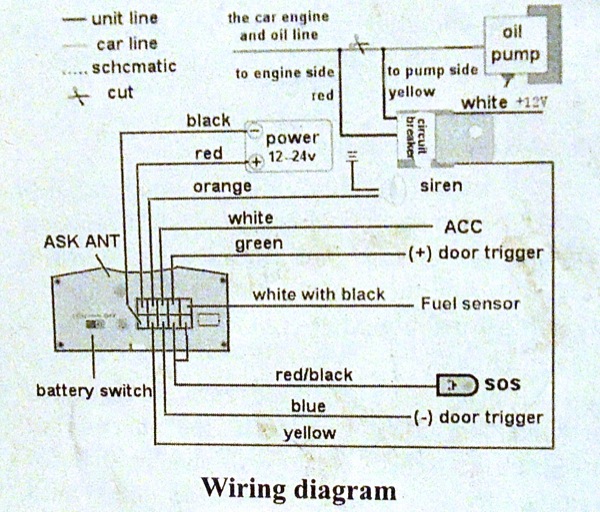
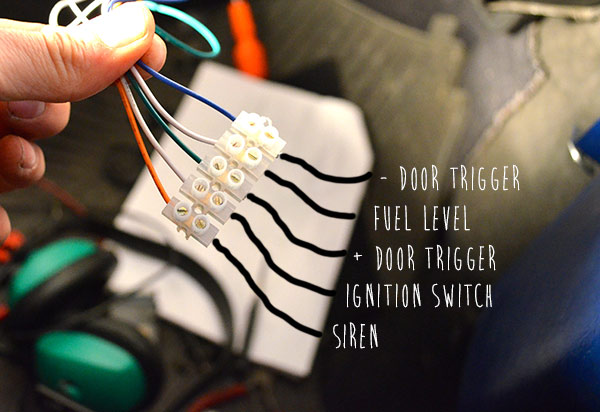
Wiring the engine cut-out
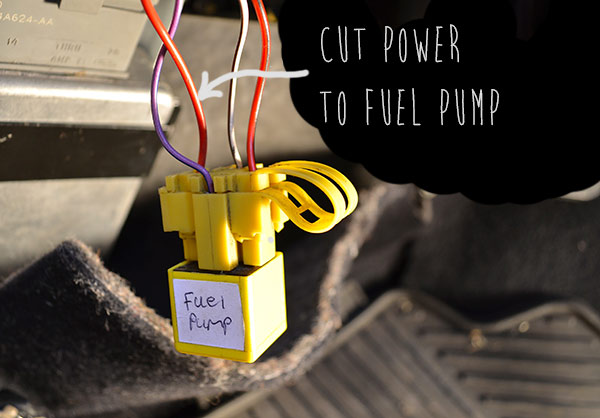
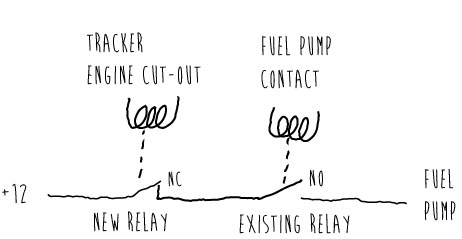

Wiring the door sense alarm
I decided to make use of the door trigger alarm on the tracker since the door contacts are already there – used to turn on the courtesy light.
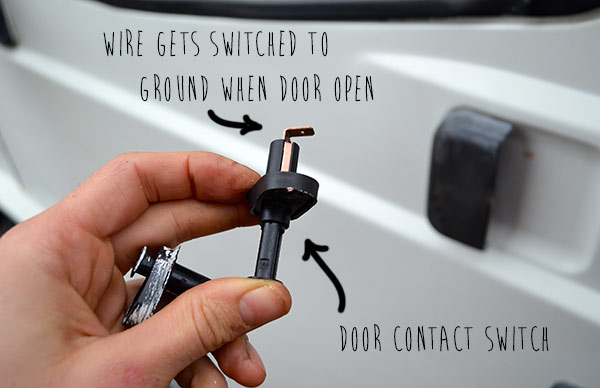
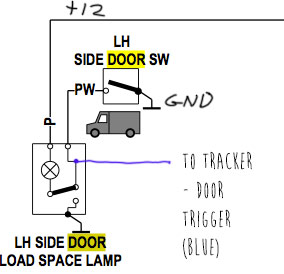
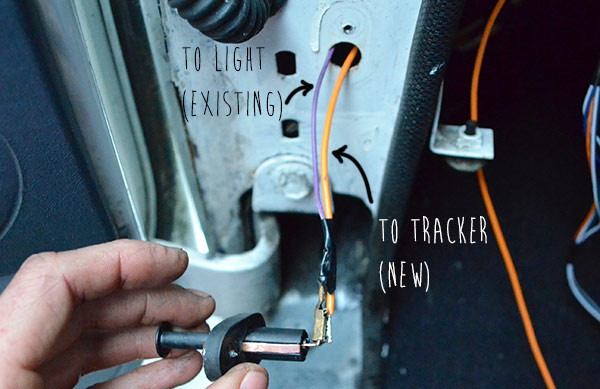
setting up and testing the tracker
The tracker uses the GSM GPRS mobile network for its reporting and control (two-way between you and the tracker) and requires a standard sim card with 2g functionality. The other thing to consider when choosing the sim card is the cost of text messages and the ability to remotely view how much credit is left. The Giffgaff prepay SIM (UK provider) proved to be the perfect choice for this tracker since it operates on 2G or 3G no problem and your account credit can be viewed online.
How to activate the tracker with a new SIM card:
- register your new sim in a working phone and test it out with a text message
- put sim card in tracker and send the message ‘begin123456’ (without quotes) where 123456 is the default password. Tracker will reply with ‘begin ok!’
- authorise phone (up to 5 numbers allowed) by sending ‘admin+password+space+phonenumber’
Here are some of the (not all) tracker commands
| Function | Command (by SMS) | Example |
| set an authorised number | admin+password+space+phonenumber | admin123456 07844 xxxxxx |
| auto track at specified intervals for finite length of time (up to 255) | fix030s004n+password | fix030s005n123456 |
| auto track at specified intervals for infinite length of time (minimum interval 20s) | fix030s***n+password | fix030s***n123456 |
| cancel auto track | nofix+password | nofix123456 |
| cut out engine | stop+password | stop123456 |
| arm the alarm | arm+password | arm123456 |
| disarm the alarm | disarm+password | disarm123456 |
| check vehicle status | check+password | check123456 |
Results!

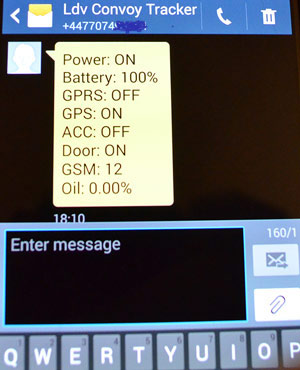
Observations and quirks
- I noticed when the to power the tracker is removed, the engine cut-out relay energises. Whether this is an intentional ‘fail safe’ aspect of the design I’m not sure but it may have the disadvantage of draining the battery quicker than normal. Saying that, the advantage would be that you would know if the tracker fuse has blown because the engine will not start – not my favourite fuse fail indication but it’ll do.
- The other strange behaviour happens when the tracker unit is turned to the off position and no external power (simulating blown fuse) BUT with power remaining on the coil of the cut-out relay, something strange happens. The tracker LED remains lit and the relay will turn on and off at random intervals from 2-8 seconds. I’ve been trying to figure out why this is happening but I’ve not decided yet.
- The other thing I noticed is the switch on the tracker unit itself does not function as a switch if the unit is connected to external power. i.e the vehicle battery.
- Something to think about when fitting the cut-out relay option is what part of the circuit you will breaking. You will be relying on the normally closed relay contacts in normal operation (de-energised) which means that a sharp jolt may jump the contact (open circuit) for a split second – enough to break an electrical latch. So if you do fit this relay then I recommend fitting it somewhere in a circuit that does not form part of an electrical latch.
All in all, this GPS tracker is a great bit of kit for the money (don’t be fooled by how cheap it is) and will give peace of mind when leaving the van in unknown areas for any period of time. A good buy! China, you did well today.




